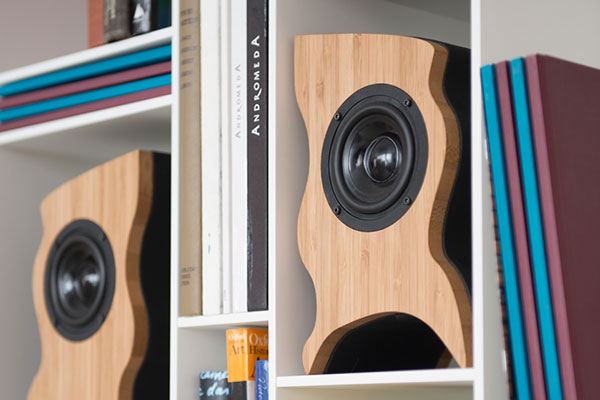Enclosure
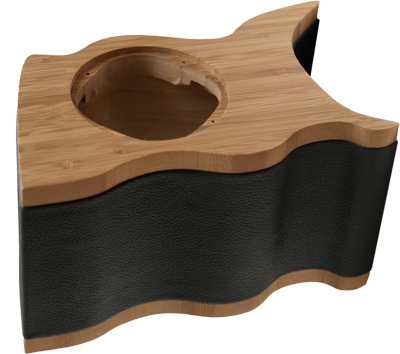 There is more to designing and making great speaker enclosures than good woodworking skills. Way more.
There is more to designing and making great speaker enclosures than good woodworking skills. Way more.
The primary goal of the enclosure is to block the waves radiating from the back of the drivers, but they are capable of much more in the hands of a good designer.
Depending on the design goals and the capabilities of the amplifier and drivers, enclosures can be designed to deliver outstanding sound. Here is how we did it.
1. Controlled Tuning
Aside from blocking the back waves of the drivers, enclosures can do one more thing, and that is to extend the bass to even lower frequencies. But that is nothing new. A driver’s specs (predominantly its surface area) dictate how deep a bass they can produce, and you can’t bend the laws of physics. However, we have one more tool in our toolbox that most designers don’t.
Most designers don’t have control over what amplifiers are going to be connected to their speakers or design for normal amplifiers. But our amps are not normal! We specifically designed them for this! We have equipped them with a powerful dedicated DSP chip. That, plus high excursion capability of our drivers provides another degree of freedom that we have taken advantage of to precisely tune them to have an even deeper bass than what is traditionally possible from a ported enclosure.
In figure 1 you see two frequency response plots overlaid on top of each other They are from two different ported enclosures. Both are the same size with the same driver. The blue one is tuned like a normal audiophile speaker. The the orange one is tuned to take advantage of our DSP amplifier and driver.
If you look closely you'll see the blue one has a -3dB point of 95Hz (marked by the red line) . However, the box orange one reaches down to 65Hz. No small feat for a speaker this size!
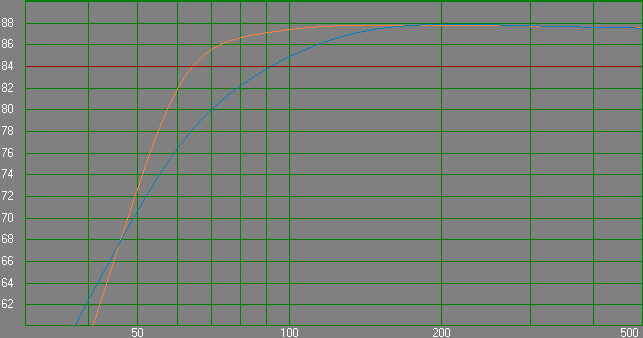
Note:
The plot above tells you the bass extension of our speaker when it is measured in free field, meaning there are no boundaries to reflect the sound.
This is how speakers should be measured and reported.
If one measures a speakers in a room (where there are walls), it will appear to have more bass.
If you put it in a corner, it'll appear to have even more bass.
And that is how some manufacturers report their numbers, because bass sells.
So if you see a speaker the size of a tissue box, and the manufacturer tells you the bass extends down to 40Hz, be cautious.
2. Resonances Control
Air in any cavity resonates at certain frequencies. They call this standing waves. Speaker enclosures are no different. The problem with standing waves is that they affect the cone movement and cause anomalies in frequency response and keep ringing even after the input is gone. The shape of the enclosure can help, but it won’t eliminate the problem. The best way eliminate this problem is to stuff the cabinet with acoustic damping material. It is surprising to see many manufacturers ignoring this. Cumulative Spectral Decay (CSD) plots are the best way to spot these resonances.
In figure 2 you can see a CSD plot of a prototype without damping. You can see a strong resonance at 1.7Khz. There is also a strong resonance centered around 70Hz which is characteristic of all bass-reflex enclosures, but the one at 1.7Khz has to be addressed.
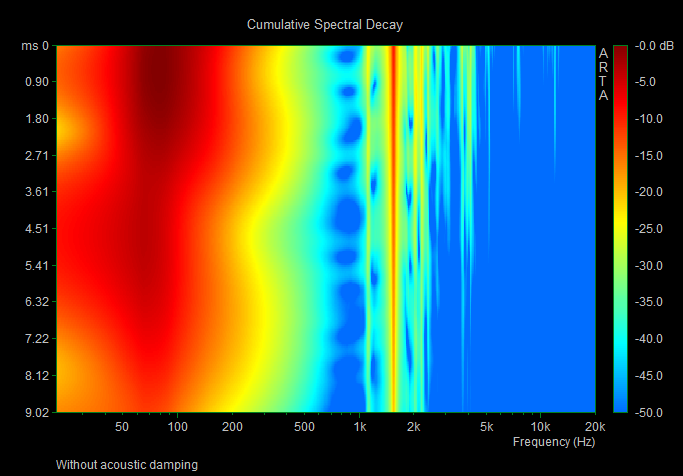
In figure 3 you see the same cabinet with acoustic damping material added inside greatly reducing resonances.
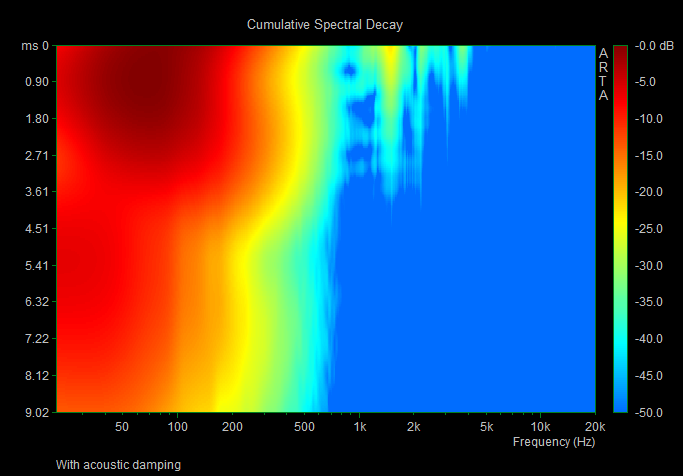
We fill our boxes with acoustic absorbent material to avoid resonances. This means in a smooth frequency response and high fidelity sound.
3. Wall Resonance
As opposed to an acoustic musical instrument whose body vibrates and enhances the sound, a speaker box should be vibration free. This is what computer speakers with plastic enclosures suffer from greatly. Thermoplastics in order to be moldable have to have thin walls, because thick walls shrink and deform during cooling. Our enclosures are not made of plastic, and even though they are comparatively small, they are made of ¾ inch bamboo and MDF covered with leather. This ensures cabinets are sturdy and acoustically dead, so you only hear the music.


